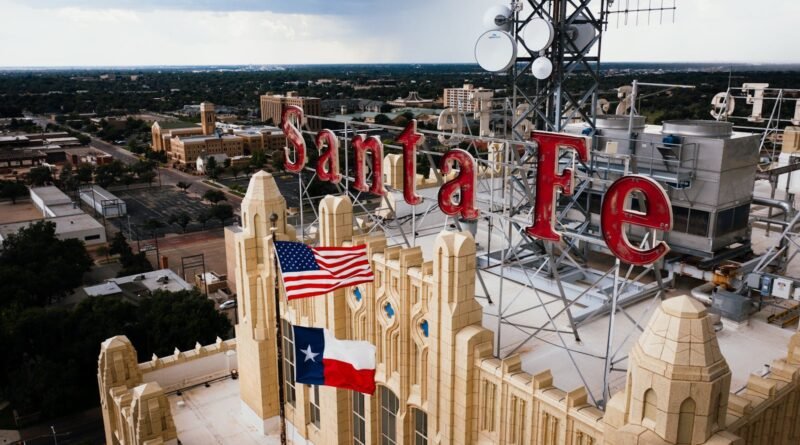10 Oldest Cities in the United States
By
The United States was “born” on July 4, 1776, but the oldest cities in the U.S. were established long before the nation was. All the oldest cities were founded by European explorers—Spanish, French, and English—but most occupied lands were settled long before by Indigenous peoples.
These cities hail from eight different states across the United States. Though many are in the South, they stretch as far west as New Mexico and north up to New York and Massachusetts. Learn more about America’s roots with this list of the 10 oldest cities in the United States—including the military outpost of Hampton, Virginia, and the former capital of Spanish Florida.
01
of 10
St. Augustine, Florida (1565)
:max_bytes(150000):strip_icc():format(webp)/GettyImages-564091675-595e88575f9b58843fefacc0.jpg)
St. Augustine was founded on Sept. 8, 1565, 11 days after the Spanish explorer Pedro Menéndez de Avilés came ashore on the feast day of St. Augustine. For more than 200 years, it was the capital of Spanish Florida. From 1763 to 1783, control of the region fell into British hands. During that period, St. Augustine was the capital of British East Florida. Control reverted to the Spanish in 1783 until 1822, when it was ceded by treaty to the United States.
St. Augustine remained the territorial capital until it was moved to Tallahassee in 1824. In the 1880s, developer Henry Flagler began buying up local rail lines and building hotels, ushering in what would become Florida’s winter tourist trade, still an important part of the city and state economy.
02
of 10
Jamestown, Virginia (1607)
:max_bytes(150000):strip_icc():format(webp)/GettyImages-51246051-595e89d05f9b58843fefdfe0.jpg)
The city of Jamestown is the second-oldest city in the U.S. and the site of the first permanent English colony in North America. It was founded on April 26, 1607, and briefly called James Fort after the English king. The settlement foundered in its first years and was briefly abandoned in 1610. By 1624, when Virginia became a British royal colony, Jamestown had become a small town, and it served as the colonial capital until 1698.
By the end of the Civil War in 1865, most of the original settlement (called Old Jamestowne) had fallen into ruin. Preservation efforts began at the turn of the 1900s while the land was in private hands. In 1936, it was designated a national park and renamed Colonial National Park. In 2007, Queen Elizabeth II of Great Britain was a guest for the 400th-anniversary celebration of Jamestown’s founding.
03
of 10
Santa Fe, New Mexico (1607)
:max_bytes(150000):strip_icc():format(webp)/GettyImages-672617200-595e8b735f9b58843fefe650.jpg)
Santa Fe holds the distinction of being the oldest state capital in the U.S. as well as New Mexico’s oldest city. Long before Spanish colonists arrived in 1607, the area had been occupied by Indigenous peoples. One Pueblo village, founded around 900 A.D., was located in what is today downtown Santa Fe. Indigenous groups expelled the Spanish from the region from 1680 to 1692, but the rebellion was eventually put down.
Santa Fe remained in Spanish hands until Mexico declared its independence in 1810, and then became part of the Texas Republic when it pulled away from Mexico in 1836. Santa Fe (and present-day New Mexico) didn’t become a part of the United States until 1848 after the Mexican-American War ended in Mexico’s defeat. Today, Santa Fe is a thriving capital city known for its Spanish Territorial style of architecture.
America’s True Oldest Town: A Mystery Unraveled
04
of 10
Hampton, Virginia (1610)
:max_bytes(150000):strip_icc():format(webp)/old-point-comfort-lighthouse--fort-monroe--hampton-511535905-59bacbf19abed50011240e41.jpg)
Hampton, Virginia, began as Point Comfort, an English outpost established by the same people who founded nearby Jamestown. Located at the mouth of the James River and the entrance to the Chesapeake Bay, Hampton became a major military outpost after America gained independence. Although Virginia was the capital of the Confederacy during the Civil War, Fort Monroe in Hampton remained in Union hands throughout the conflict. Today, the city is the home of Joint Base Langley–Eustis and just across the river from the Norfolk Naval Station.
05
of 10
Kecoughtan, Virginia (1610)
:max_bytes(150000):strip_icc():format(webp)/GettyImages-97993125-5c269b7246e0fb00015c8734.jpg)
Jamestown’s founders first encountered the region’s Indigenous people at Kecoughtan, Virginia, where members of the Kikotan People lived. Although that first contact in 1607 was largely peaceful, relations had soured within a few years, and by 1610, the Indigenous communities had been driven from the town and murdered by colonists. In 1690, the town was incorporated into part of the larger town of Hampton. Today, it remains a part of the larger municipality.
06
of 10
Newport News, Virginia (1613)
:max_bytes(150000):strip_icc():format(webp)/GettyImages-183423910-5c2699ed46e0fb0001f31b20.jpg)
Like its neighboring city of Hampton, Newport News also traces its founding to the English. But it wasn’t until the 1880s when new rail lines began bringing Appalachian coal to the newly founded shipbuilding industry. Today, Newport News Shipbuilding remains one of the largest industrial employers in the state, producing aircraft carriers and submarines for the military.
07
of 10
Albany, New York (1614)
:max_bytes(150000):strip_icc():format(webp)/general-sheridan-statue-with-state-capitol--albany-107959421-59bacc849abed500112438ec.jpg)
Albany is the capital of New York State and its oldest city. It was first settled in 1614 when Dutch traders built Fort Nassau on the banks of the Hudson River. The English, who took control in 1664, renamed it in honor of the Duke of Albany. It became the capital of New York state in 1797 and remained a regional economic and industrial power until the mid-20th century when much of upstate New York’s economy began to decline. Many state government offices in Albany are located at Empire State Plaza, which is considered a prime example of Brutalist and International Style architecture.
08
of 10
Jersey City, New Jersey (1617)
:max_bytes(150000):strip_icc():format(webp)/jersey-city-downtown-870705086-5b296a5330371300370d5d6f.jpg)
Present-day Jersey City occupies the land where Dutch traders established the settlement of New Netherland in or around 1617, although some historians trace Jersey City’s beginnings to a Dutch land grant in 1630. The Lenape People originally occupied it. Although its population was well established by the time of the American Revolution, it wasn’t formally incorporated until 1820 as the City of Jersey. Eighteen years later, it would be reincorporated as Jersey City. As of 2024, it is New Jersey’s second-largest city behind Newark.
09
of 10
Plymouth, Massachusetts (1620)
:max_bytes(150000):strip_icc():format(webp)/GettyImages-182871656-5c269b0746e0fb000198b3bc.jpg)
Plymouth is known as the site where the Pilgrims landed on December 21, 1620, after crossing the Atlantic aboard the Mayflower. It was the site of what most of us know as the first Thanksgiving and the capital of the Plymouth Colony until it merged with the Massachusetts Bay Colony in 1691.
Located on the southwestern shores of Massachusetts Bay, present-day Plymouth had been occupied by Indigenous peoples for centuries. Were it not for the assistance of Squanto and others from the Wampanoag tribe during the winter of 1620-1621, the Pilgrims may not have survived.
10
of 10
Weymouth, Massachusetts (1622)
:max_bytes(150000):strip_icc():format(webp)/Town_Hall_Weymouth-5c269aa346e0fb00015c61ca.jpg)
Weymouth today is part of the Boston metro area, but when it was founded in 1622, it was only the second permanent European settlement in Massachusetts. Backers of the Plymouth colony founded it, but they were ill-equipped to support themselves much less sustain a second outpost. The town was eventually incorporated into the Massachusetts Bay Colony.
Briney, Amanda. “10 Oldest Cities in the United States.” ThoughtCo. https://www.thoughtco.com/oldest-cities-in-the-united-states-4144705 (accessed July 22, 2024).




